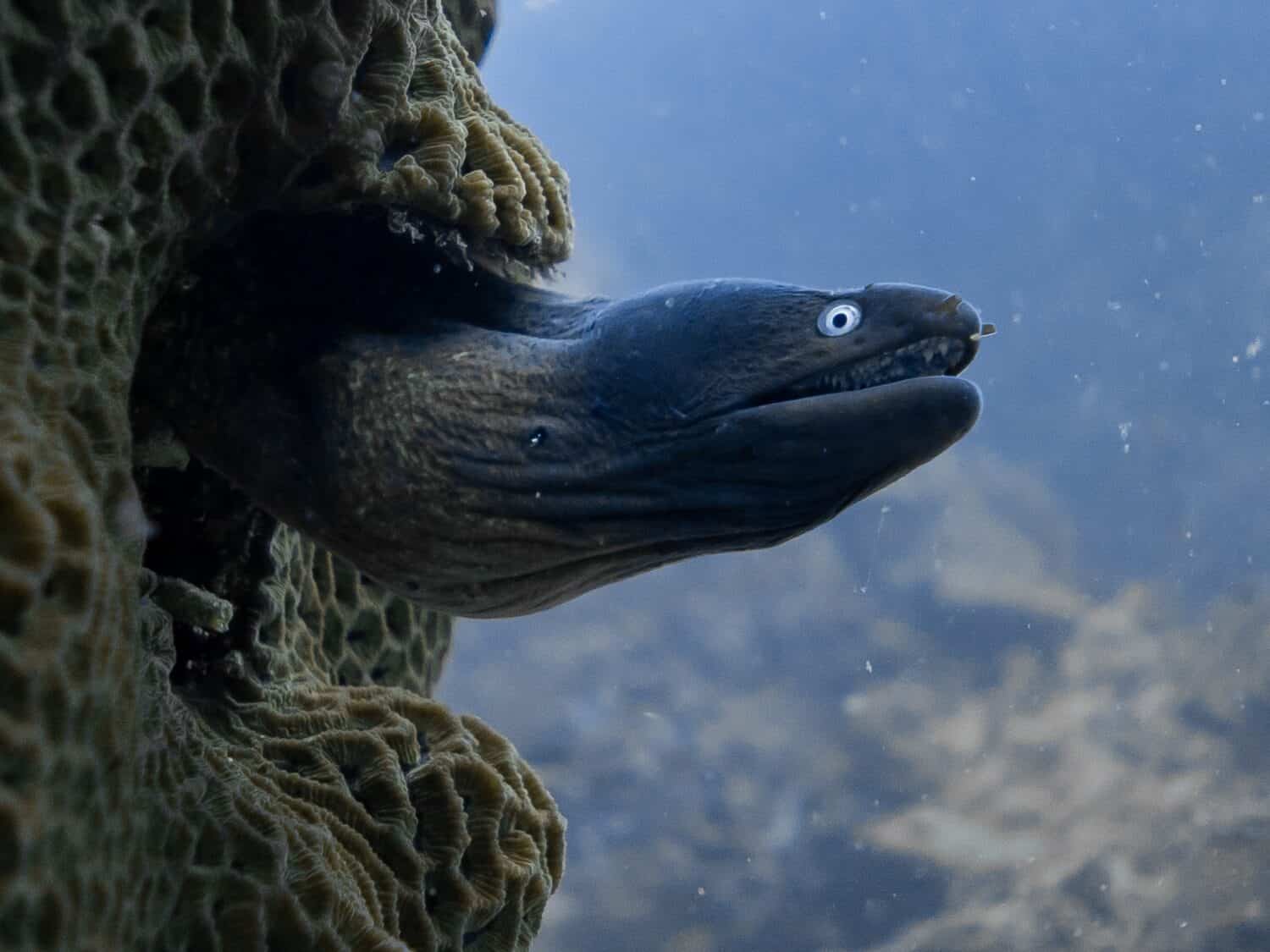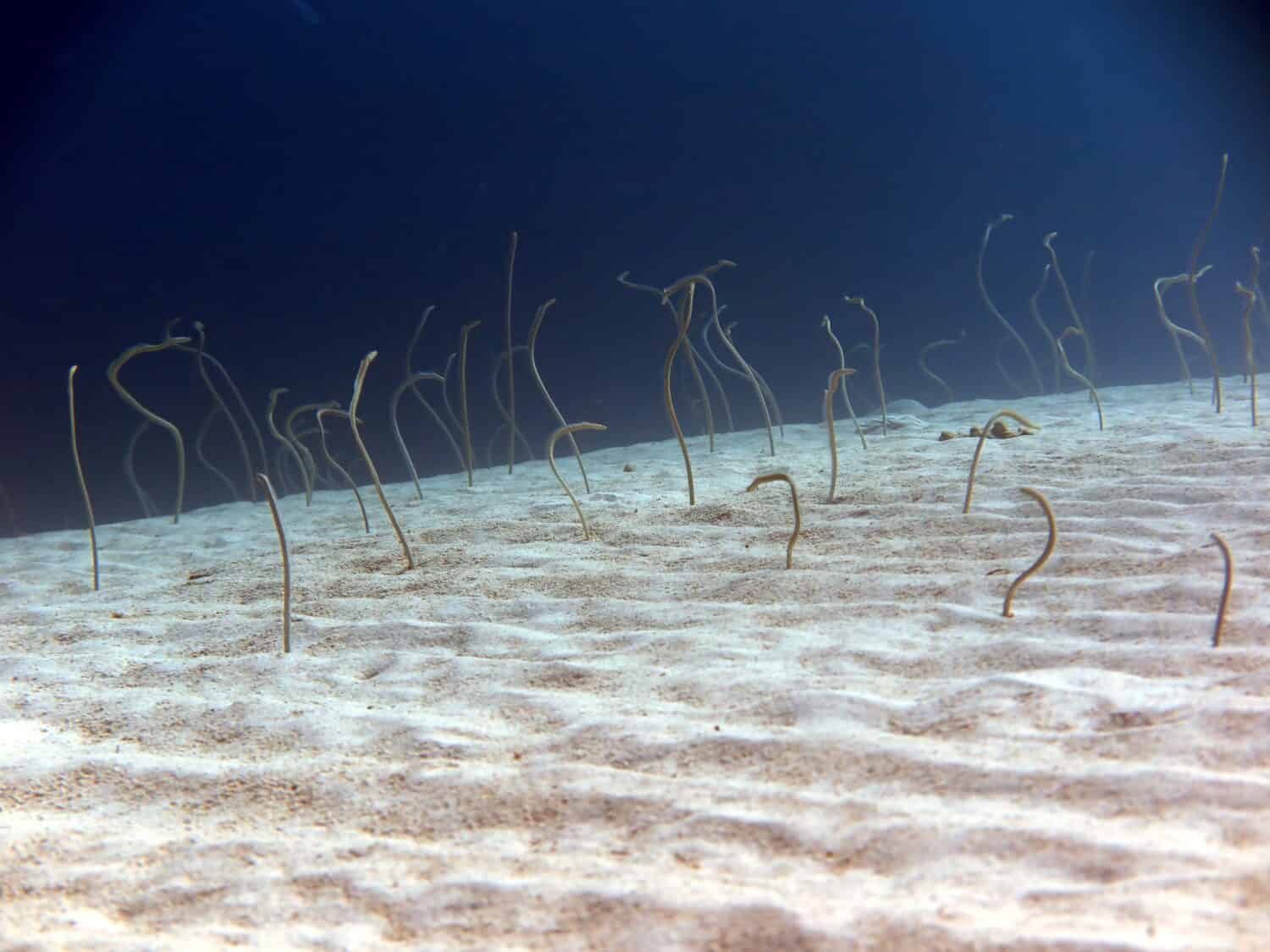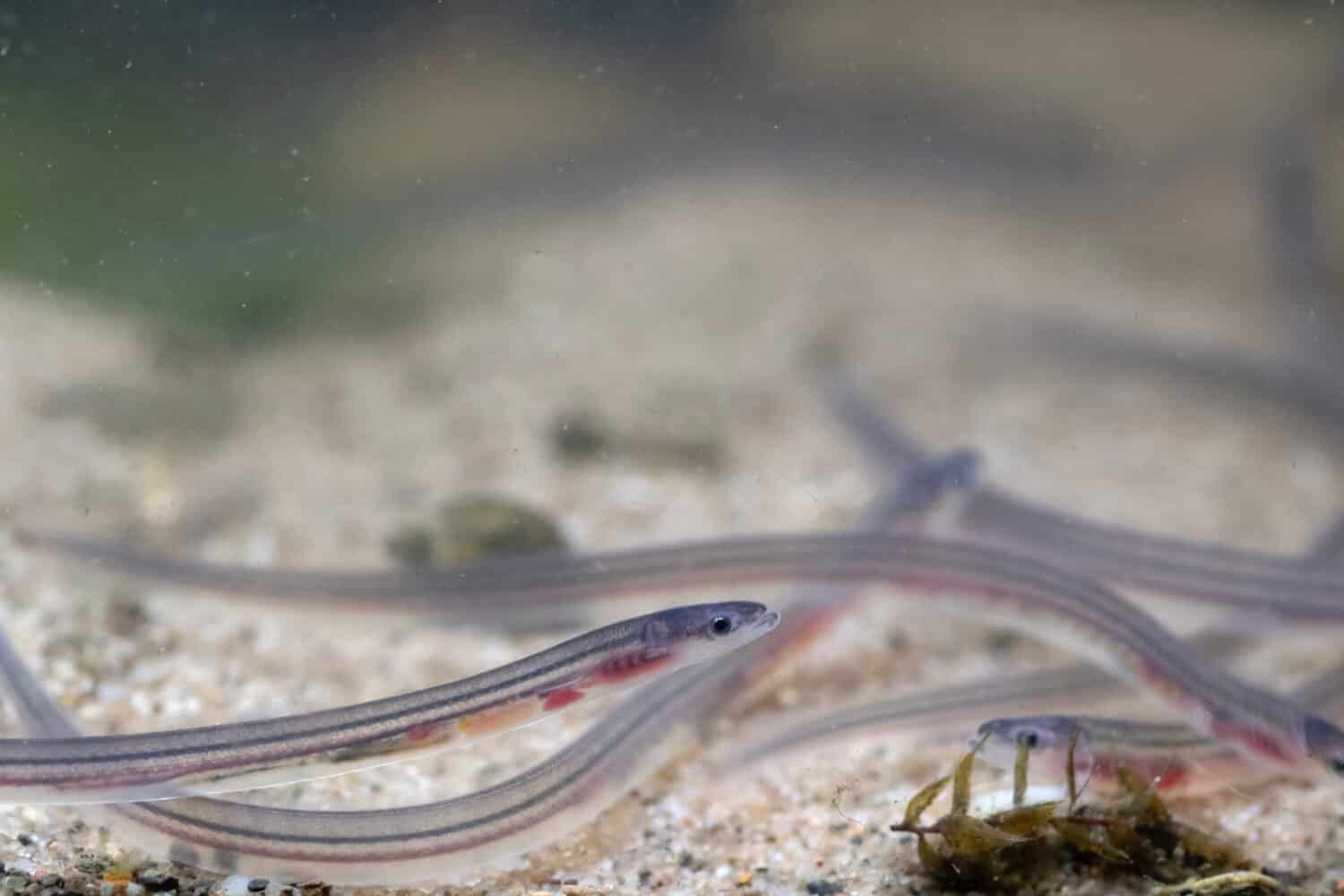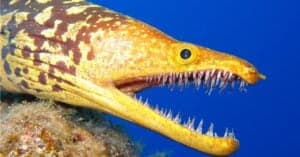Quick Answer:
- No one has ever witnessed eels mating or migrating to their spawning grounds.
- Eggs are laid into the water column by the female eels. Afterward, the males will spew their sperm throughout the water column, fertilizing eel eggs.
- Eels reproduce at the very end of their life and don’t survive past the spawning stage.
Eels are pretty fascinating creatures. Some say they look like underwater snakes, while others think they resemble something from another planet. Today, we’re going to talk about the life cycle of an eel, how they reproduce, and the weirdness of it all! Keep on reading to learn more.
How Big Can Eels Get?

Eels come in a wide variety of sizes and colors.
©Didier Barriere Doleac/Shutterstock.com
The size of eels varies based on the species. The one-jawed eel is just two inches long, while the 13-foot-long slender gigantic moray will make you nervous to go swimming. They vary in weight from less than an ounce to more than 55 pounds.
The European conger, which has been recorded to weigh 240 pounds and measure 10 feet in length, is the heaviest species.
What Do Eels Look Like?
Eels have long, worm-like bodies that give them identity. Eels lack pelvic fins, unlike the majority of fish, and the majority of species lack pectoral fins. A single dorsal, anal, and caudal fin surrounds the tail tip of eels.
Eels use waves to move throughout the water, utilizing the length of their body while swimming. They change the trajectory of the wave to swim backward. Scaleless skin covers most eels’ bodies.
They come in a variety of colors, from the dull grey or black of deep-sea species to the vibrant and patterned hues of tropical reef species.
How Do Eels Reproduce?
Believe it or not, the way eels reproduce has been a mystery for quite some time. For decades, scientists had no idea how or where these critters would mate. They are still researching eels to this day, and have been since ancient Greece.
Thanks to the advancement of science, we’re learning more and more about these slithery underwater critters. We are aware that rivers in Japan, Europe, and other nations are home to freshwater eels. However, no one has ever witnessed them mating or migrating to their spawning grounds.

European eels will hibernate in mud underwater.
©286406361/Shutterstock.com
Throughout their dissections, experts haven’t even managed to locate any reproductive organs or eggs. Due to the lack of sexual organs in young eels, scientists are also unsure of when they mature.
But they have discovered gonads in eels that were approximately 11 inches long at the time of their late adolescent stage. Scientists think that external variables most likely influence when eels attain sexual maturity.
The temperature and salinity likely play a role. When an eel population is low, it’s likely that the eggs will result in most females. Eels reproduce at the very end of their life. They don’t make it past the spawning stage. When hundreds of eels congregate to lay eggs, they all perish at once.
The eggs are laid into the water column by the female eels when they arrive. After that, the males will spew their sperm throughout the water column, fertilizing eel eggs. A single female eel is considered to be capable of laying anything from two between two and ten million eggs.
Where Do Eels Reproduce?

One can spot Sargassum seaweed on the shore throughout the Caribbean.
©Multiverse/Shutterstock.com
The majority of breeding happens in the Sargasso Sea. A large area of the water known as the Sargasso Sea is named after the Sargassum genus of drifting seaweed. It is an area in the Atlantic Ocean where four currents meet to form an ocean gyre.
They spawn, according to researchers, through external fertilization. Millions of eggs are released into the water by the females, where the male’s sperm fertilizes them. In a dark turn of events, the eels then die.
Eel Life Cycle
The eggs an eel lays eventually rise to the surface. This is where they will hatch. The clear, tiny, leaf-shaped larvae have a little size. The term “leptocephali” refers to the larval eels at this stage.
Once in freshwater, the leptocephali are going to live the majority of their lives there. For nearly a year, the leptocephali will float across the ocean. They will have changed once again as they reach their final destination.
Glass Eel Stage

Glass eels stay close to the riverbed.
©jack perks/Shutterstock.com
The eels are now at the “glass eel” stage. This is where they travel to the rivers they’ll call home. Glass eels can grow to a length of around two to three inches and resemble fully mature eels in appearance. Their fins have also grown in, giving them the long, lean appearance of a mature eel.
They are looking for freshwater to settle in as glass eels. These eels are extremely eager to locate a freshwater location to establish their home, much like during mating. They frequently move from ponds or lakes until they come to a river. They accomplish this by moving across the land like a snake.
Elver and Yellow Eel Stage
These eels turn black as they continue up the river. At this point, they are at the “elver” stage and are a little over four inches long. Elvers are essentially baby eels that are related to the adult eel. They are currently moving farther up streams and rivers in their migration.
The eels will eventually evolve into immature yellow eels as they get older. It’s noteworthy that freshwater eels will spend the majority of their lives in this stage. Eels have been in this stage for approximately 20 years and are still regarded as juveniles.
Eels that dwell in mostly freshwater environments live longer and get bigger, according to research. Eels mature significantly more quickly in salty environments close to the ocean.
The photo featured at the top of this post is © iStock.com/Kseniia Mnasina
Thank you for reading! Have some feedback for us? Contact the AZ Animals editorial team.






